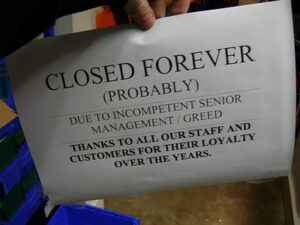The National Student Clearinghouse Research Center released its analysis of fall enrollment trends this week. For community colleges, enrollment declines persist. Since Fall 2020, community college enrollment has declined by 5.4%.
There weren’t too many bright spots in the most recent report. The rate of enrollment decline has slowed. Male enrollment at community colleges increased by nearly 1%. Female students account for two-thirds of the enrollment declines at two-year schools. That’s not good because the majority of community college students are female.
Losing enrollment among female students is more than “not good.” It’s just plain bad. Female community college students tend to have higher persistence rates and higher graduation rates. Losing out on these students will impact an institution’s enrollment figures and graduation rates for years to come.
Although the National Student Clearinghouse’s report relates to enrollment declines in a post-pandemic world, community college enrollments have been in decline for years. That signals a growing problem with the perceived value of a community college degree. When women -who are already paid less for substantially similar positions – voluntarily withdraw from community colleges, it usually means one of two things: time or money.
Female graduates need to make as much money as possible, to make up for systemic disparities in men’s and women’s earnings. People enroll at a community college either to earn a degree outright or to transfer to a four-year institution. While enrollment at four-year institutions has been affected by the pandemic, these effects are not noted to the same degree that community colleges have experienced.
Community colleges need to refocus on the student
The significant decline in enrollment among female students comes from those students who would have enrolled to earn a two-year degree. The problem isn’t COVID-19, or online learning, or even cost. The problem is that students (male and female) can make as much money without a two-year degree as with one.
A woman will not – in many cases -get substantially farther ahead economically by taking the time and spending the money to earn a community college degree. This is driving the enrollment declines, which will not change until someone takes the time to change “the money problem.”
If the gravitation toward low-wage occupational training at community colleges isn’t reversed soon, community colleges will enter a “death spiral” that will become exceedingly hard to reverse. Tuning community college degrees to the needs of an employer makes little economic sense. In fact, this strategy has reduced enrollment at community colleges.
So, why are community colleges still doing it?
Photo Credit: Elmira College , via Flickr





























